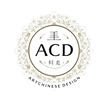Introduction
How Much Is a Silk Scarf? Decoding the Price Factors from Momme to Masterpiece
1. Momme: The Foundation of Silk Quality
Low Momme (6–12 mm): Lightweight, semi-sheer, ideal for delicate scarves and linings.
Medium Momme (12–19 mm): Balanced weight for everyday wear (e.g., blouses, scarves).
High Momme (20–28 mm): Luxurious, opaque, and durable—perfect for premium scarves.
Very High Momme (30+ mm): Rare, stiff, and used for heirloom pieces or decor
2. Raw Material Costs: Silk Consumption and Quality
Silk Type: Mulberry silk (from Bombyx morisilkworms) is the gold standard. 6A-grade long-fiber silk costs $8+/gram,whileshort−fiberor blended silk may cost as little as $0.3/gram
Scarf Consumption: A 60x150 cm scarf requires 50–55 grams of silk (including 10–15% cutting waste). Thus, material costs alone range from $15(basicshort−fiber) to $50+ (premium long-fiber)
3. Design Costs: Mass-Market vs. Artistic Value
Mass-Market Designs: Generic patterns or digital prints cost $5–$20 per scarf (amortized across bulk production).
Artisan/Master Designs: Custom designs by renowned artists or cultural collaborations (e.g., Suzhou embroidery motifs) add $100–$500+ per scarf due to creative IP and exclusivity
4. Production Techniques: Machine vs. Handcrafted
Machine Manufacturing: Digital printing, laser cutting, and machine-rolled edges cost 10–30 per scarf. Efficient for bulk orders but lacks artisanal value.
Handcrafted Techniques:
Hand-Rolled Edges: Add $5–$20 per scarf.
Embroidery (e.g., Suzhou Embroidery): Adds $50–$200+ due to hours of skilled labor.
5. Brand Value and Market Positioning
Generic Brands: Focus on cost-effectiveness, with minimal markup.
Luxury Brands (e.g., Hermès, Dior): Charge 200–500% premiums for heritage, storytelling, and limited editions
📊 Summary: Price Ranges for a 60x150 cm Silk Scarf
| Cost Factor | Price Range (USD) |
| Raw Materials (Silk) | 15–50+ |
| Design | 5–500+ |
| Production | 10–200+ |
| Brand Markup | 10–500+ |
| Total Retail Price | 50–1,500+ |
💎 Conclusion: Why Momme Matters
How to Tell If a Scarf Is 100% Silk
Touch and Feel: Genuine silk feels smooth, soft, and slightly cool to the touch. It glides through fingers effortlessly, while synthetics (e.g., polyester) often feel slippery or stiff
Visual Inspection: Silk has a subtle, iridescent sheen that changes under light. Synthetic fabrics reflect light uniformly and may appear overly shiny or dull
Label Check: Look for tags stating "100% Silk" or "Pure Silk." Vague terms like "silk satin" or "silk effect" often indicate blends
Burn Test (Cautionary):
Silk: Burns slowly, curls away from flames, and smells like burning hair. Leaves fine, crumbly ash.
Synthetics: Melt quickly, emit a plastic odor, and form hard beads
Water Absorption: Silk absorbs water quickly, while synthetics repel it
Crumple Test: Gently crumple the fabric. Silk produces a soft "rustling" sound (like a whisper), whereas synthetics are quieter.
Are Silk Scarves in Style in 2025?
Versatile Styling: Fashion influencers and celebrities (e.g., Hailey Bieber and Zendaya) are styling scarves as tops, headbands, bag accessories, and even belts. TikTok hashtags like #ScarfHack and #PucciGirlSummer have gone viral, showcasing creative uses
Key Trends:
Minimalist Designs: Solid colors, stripes, and geometric patterns are popular for their timeless appeal
Retro Prints: Pucci-inspired psychedelic patterns, florals, and abstract art are making a comeback
Sustainable Fashion: Vintage and handmade scarves are favored for their eco-friendly appeal
Unconventional Sizes: Smaller, thinner scarves (e.g., 53x53 cm) are trending for hair accessories, while larger ones (180x90 cm) are used as wraps
The Rise of Suzhou Embroidery (Su Embroidery):
Traditional techniques like Suzhou embroidery are gaining attention for their intricate, hand-stitched designs. These scarves often feature nature-inspired motifs (e.g., flowers, birds) and are prized as artisanal heirlooms. Brands like ArtChineseDesign incorporate Su Embroidery into modern designs, blending heritage craftsmanship with contemporary style. Explore our Su Embroidery Collection to see how ancient techniques meet 2025 trends)


0 comments